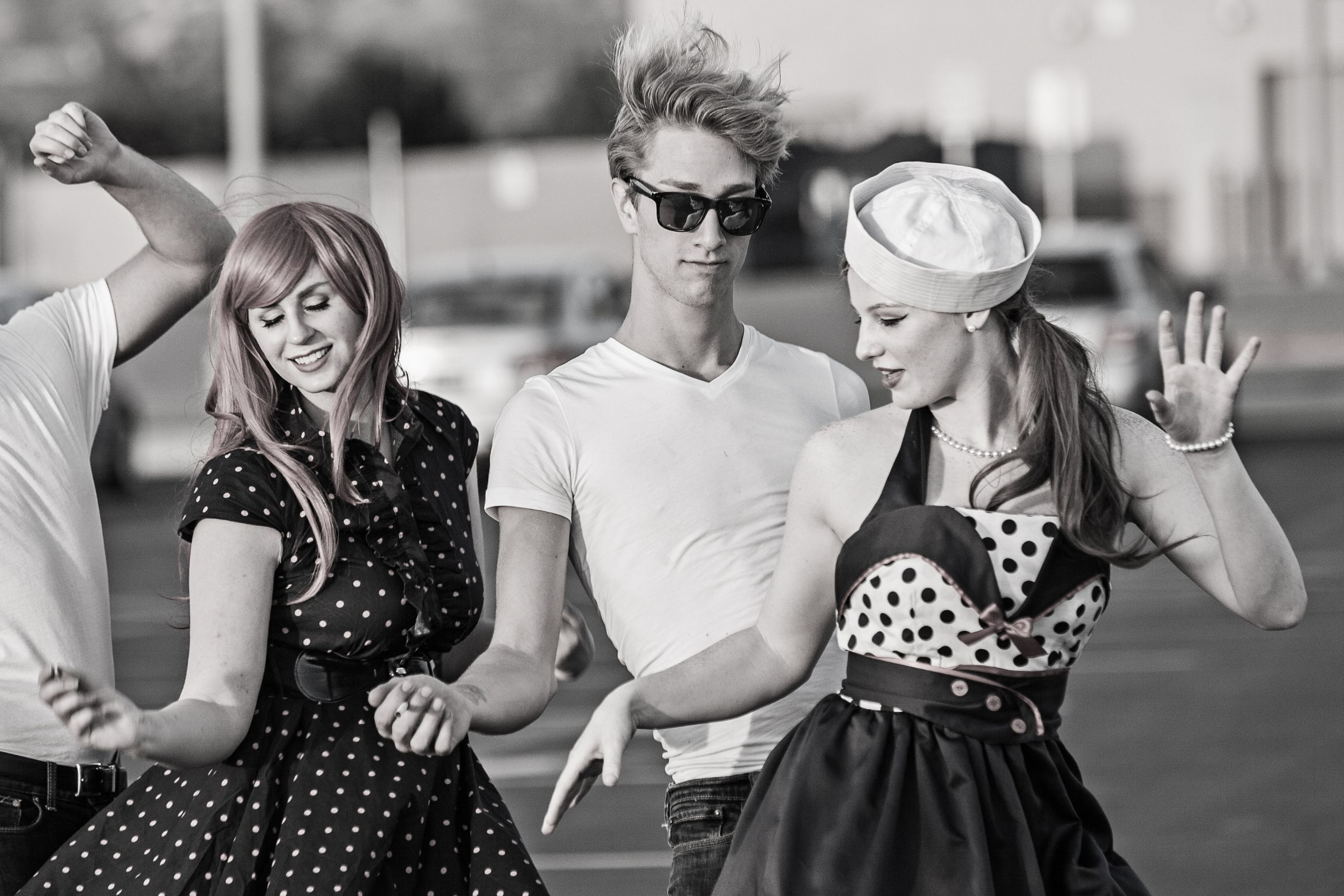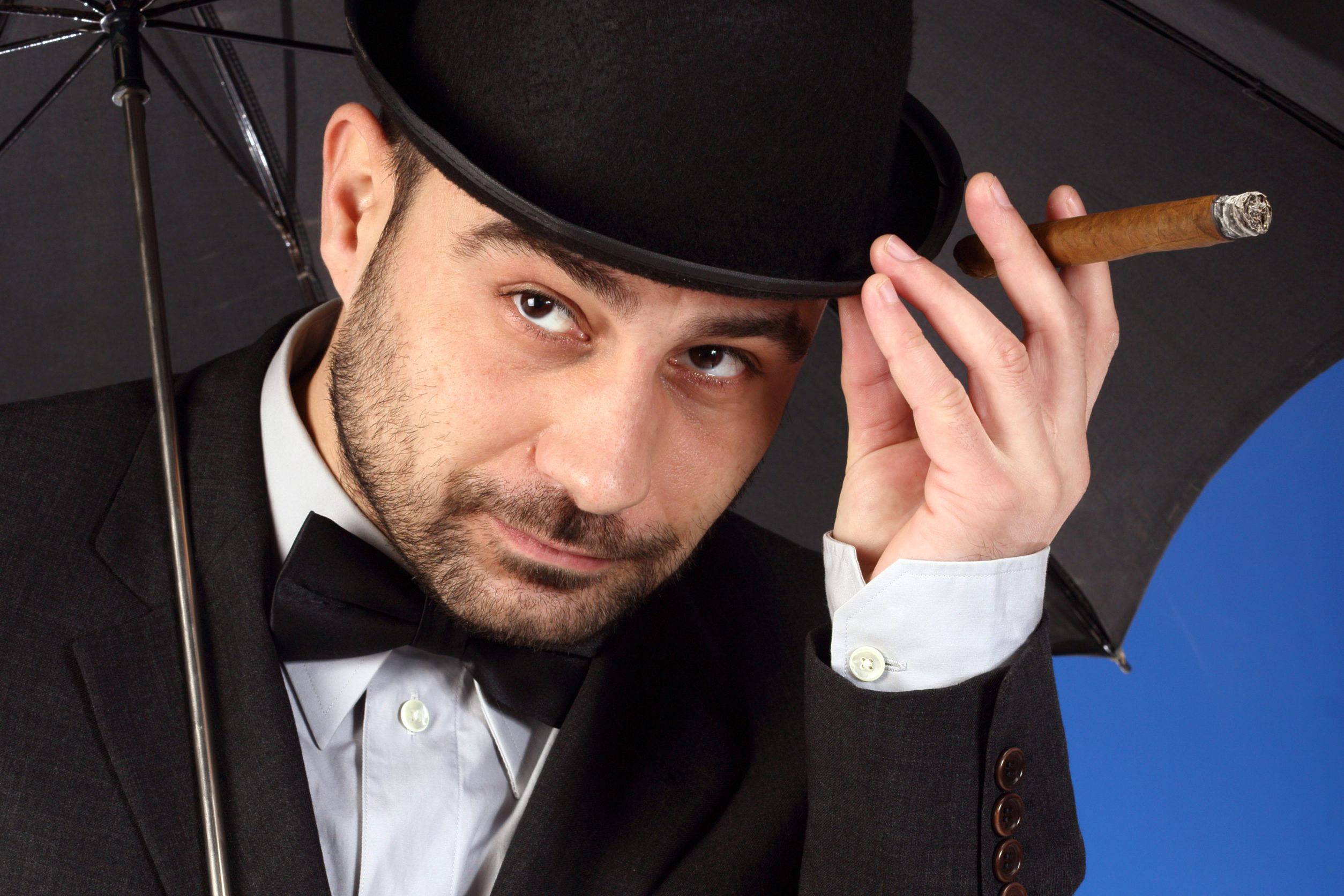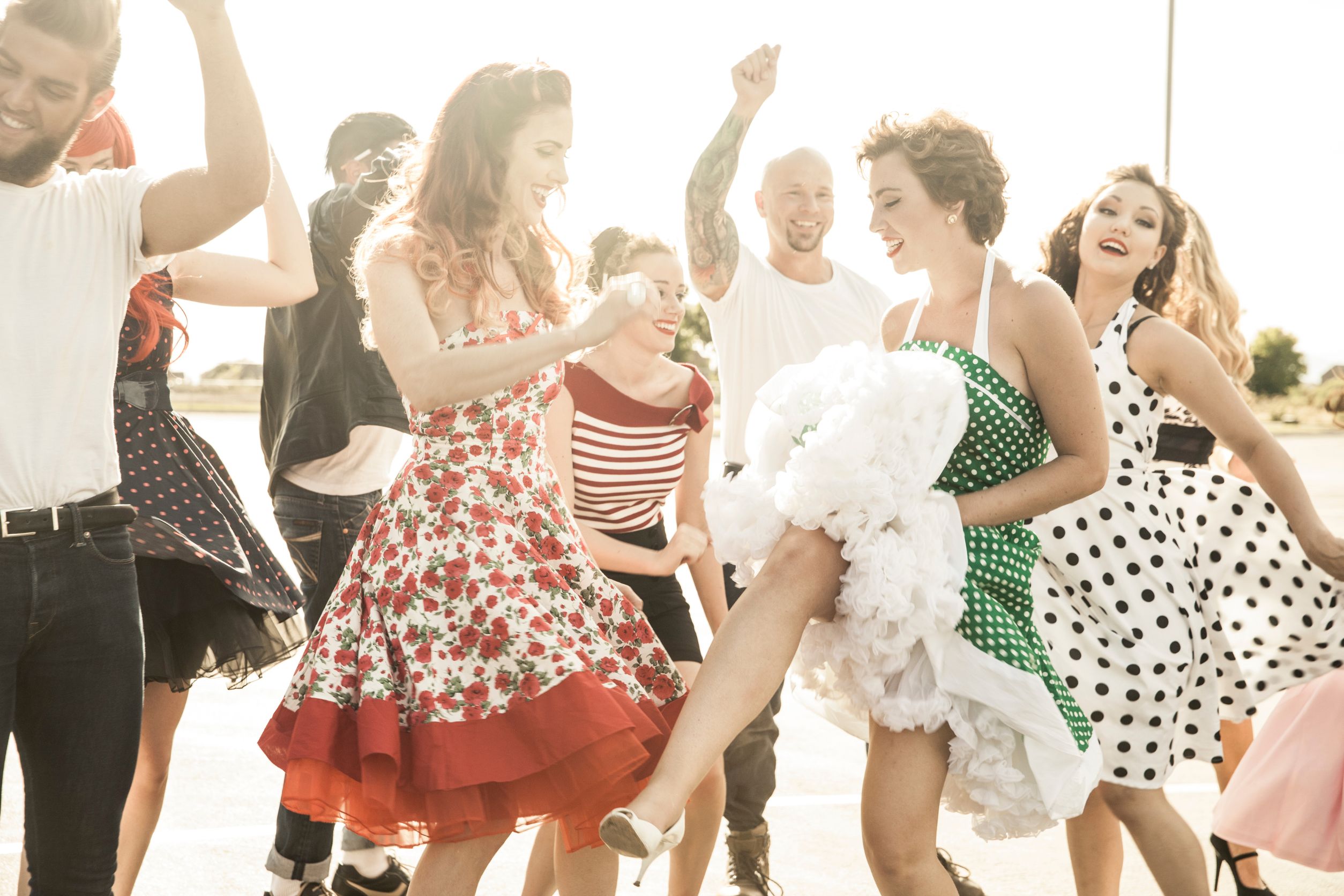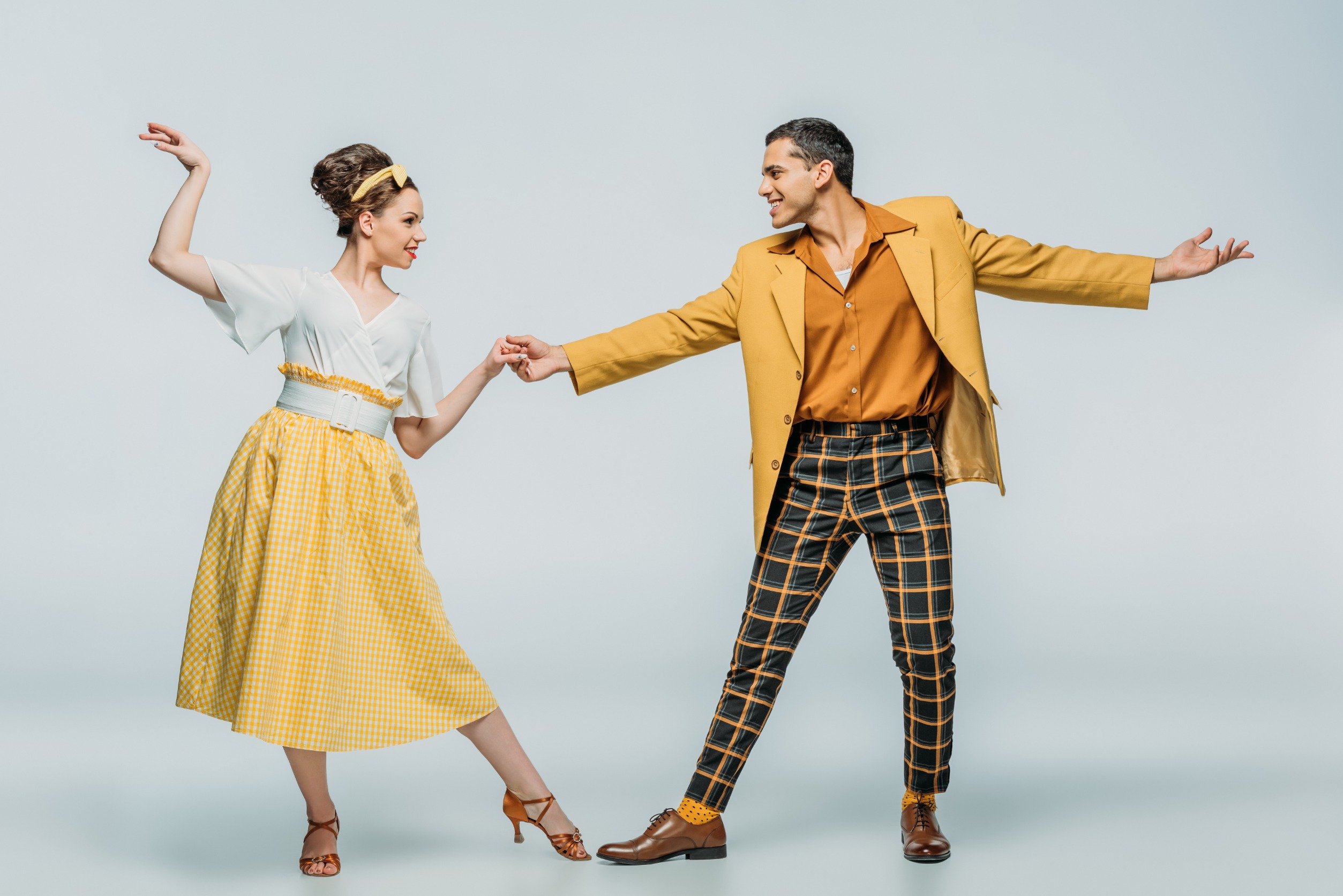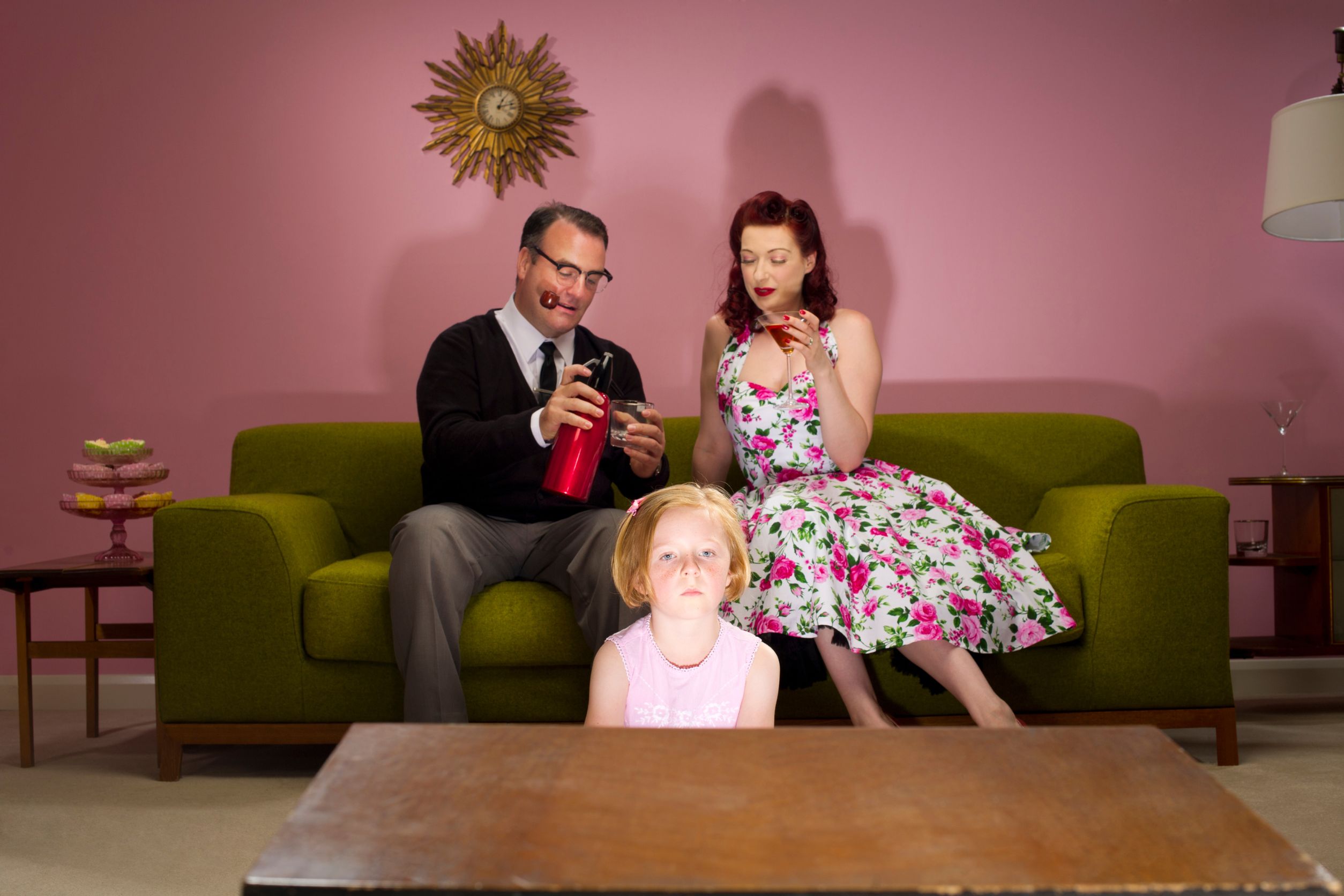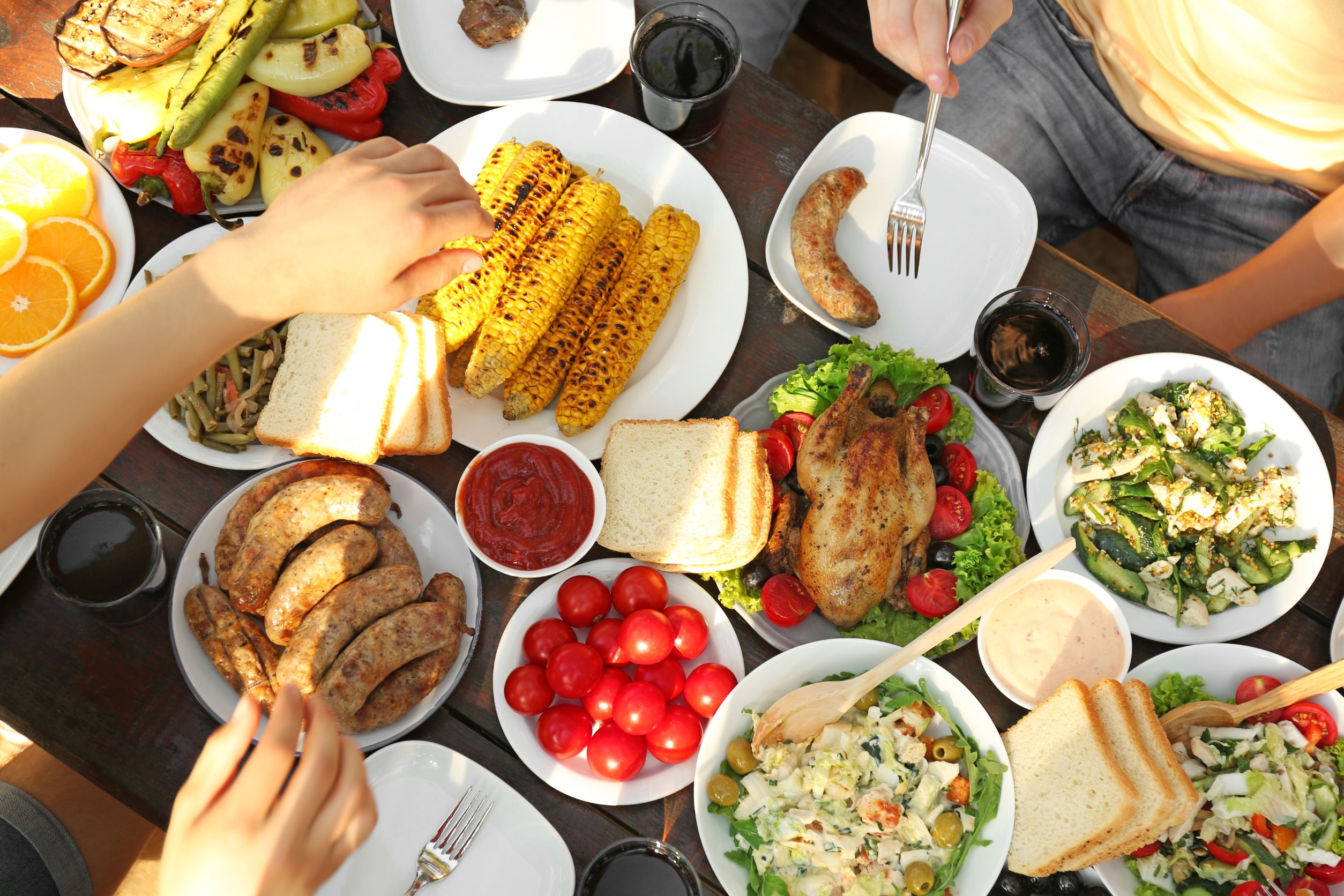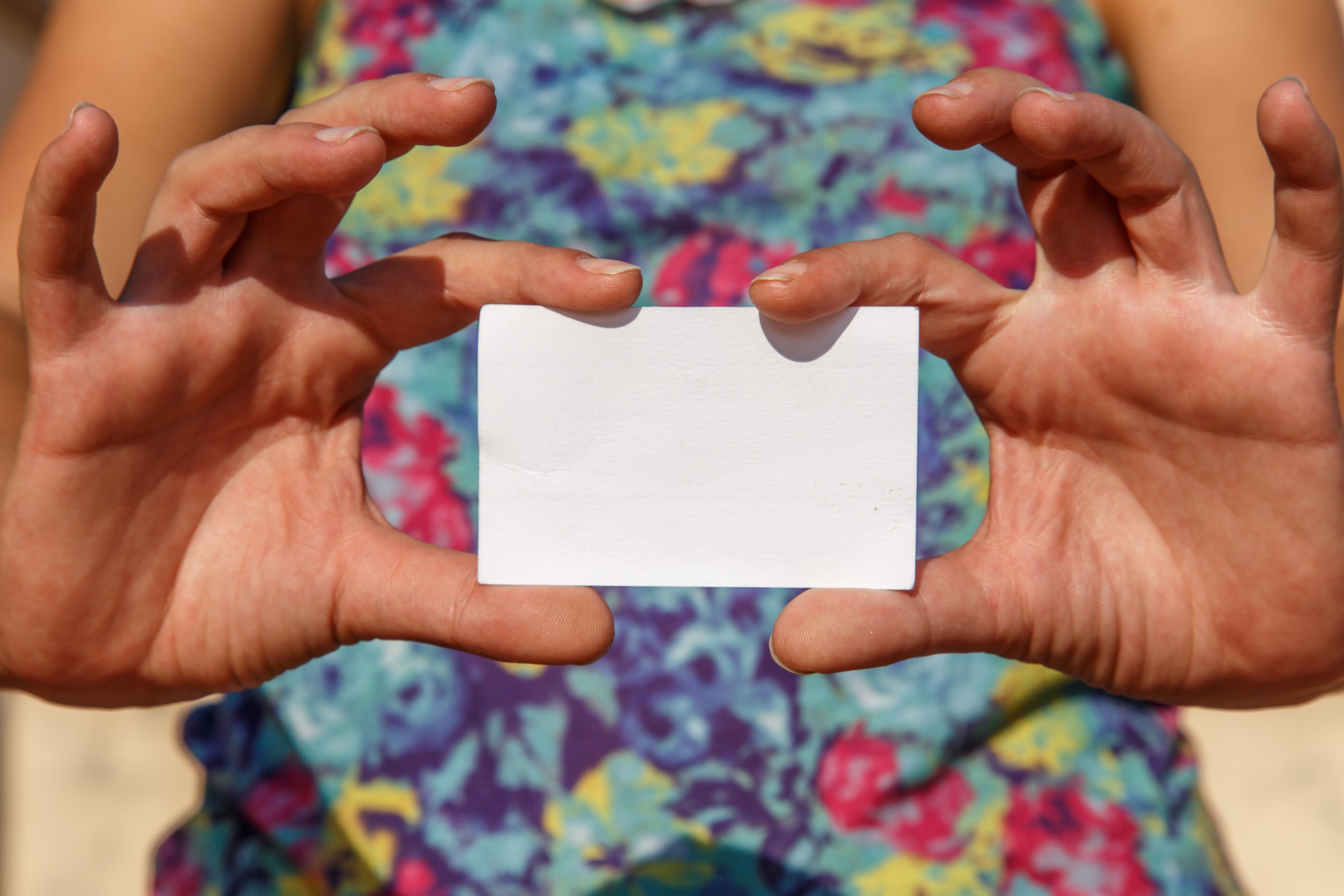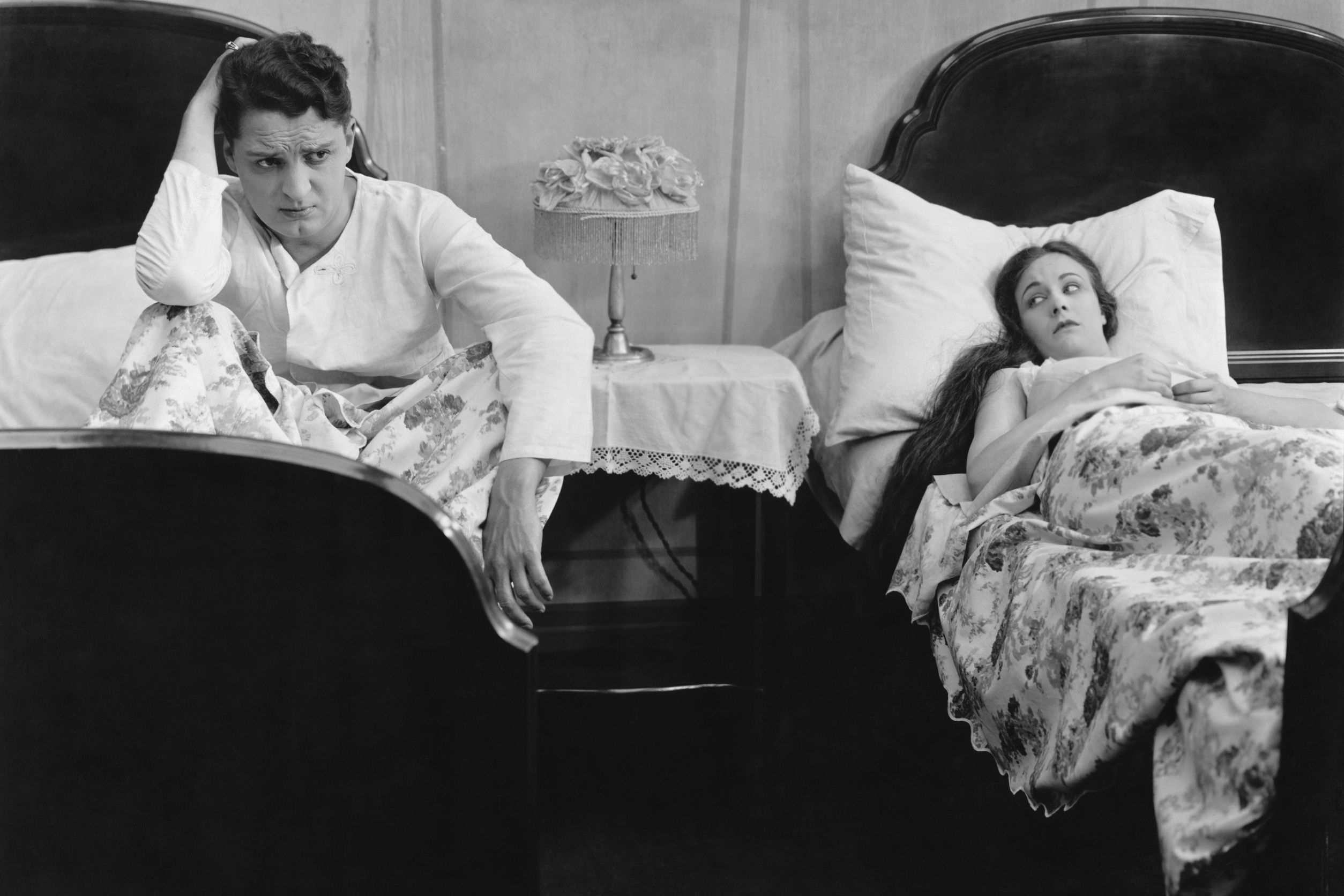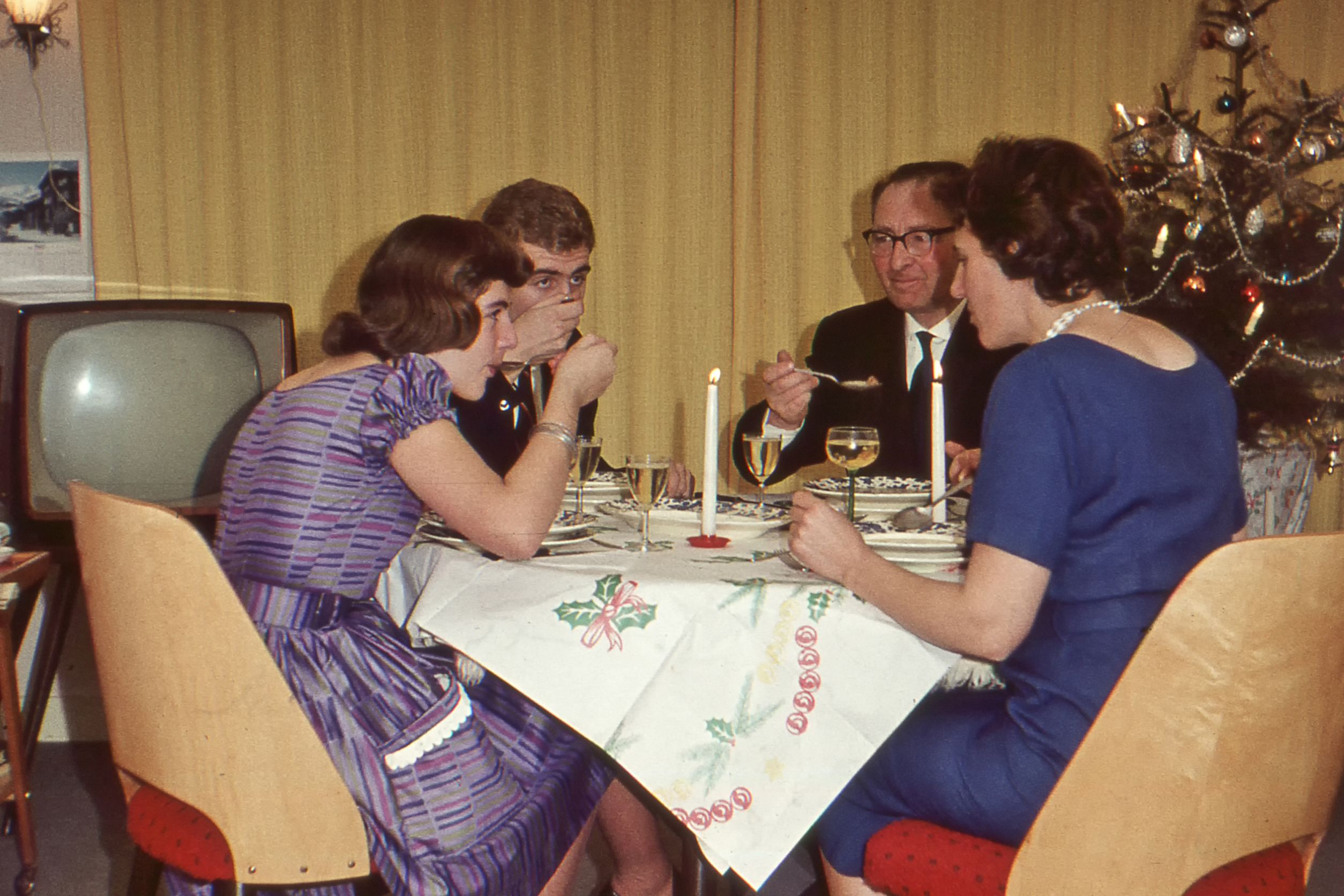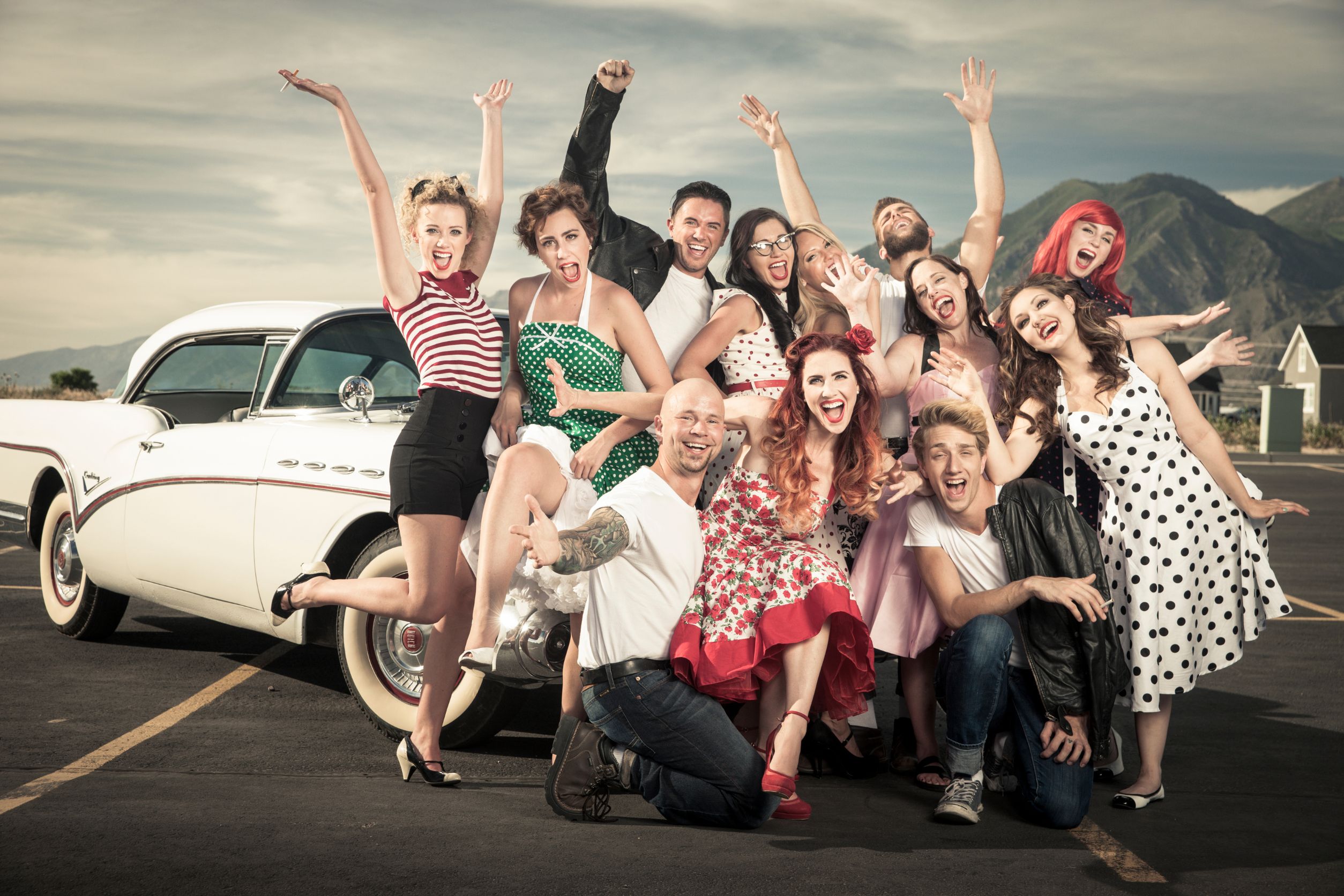The 1950s are often nostalgically remembered for their post-war prosperity and the rise of iconic pop culture. However, beneath that rock’n’roll surface, society adhered to a strict code of manners that might raise eyebrows today. From rigid dinner party protocols to strict dating dos and don’ts, the etiquette of the 1950s paints a picture of a very different time. Here’s a look at some of the quirkier, even bizarre, etiquette rules from the 1950s that would likely seem out of place in today’s more relaxed social climate.
1. Hats on for Men!
In the 1950s, a true gentleman wouldn’t leave the house without a hat, and keeping it on in public spaces was considered a sign of respect and sophistication. However, it was also crucial to know when to take it off, like during the national anthem or in a restaurant. This hat etiquette was so ingrained that a man without a hat might as well have been shirtless. Today, while hats are still fashionable, the rules around them are much more relaxed, and few would notice whether one was worn or not, let alone tip it to greet someone.
2. Women Couldn’t Order for Themselves
In a bizarre throwback to more paternalistic times, women in the 1950s were not expected to order their own meals in a restaurant when accompanied by a man. The man was supposed to order for both, ostensibly showcasing his decision-making ability and consideration for his companion’s preferences. This practice underscored the gender roles of the time, positioning men as providers and women as dependents. Today, such a practice would be considered patronizing and restrictive toward women’s independence and voice.
3. No Pants for Women
It wasn’t just dining out that had rules heavily influenced by gender. Wearing trousers was a controversial choice for women and often frowned upon in most public spaces. Skirts and dresses were the acceptable attire, reinforcing a distinct division in dress code based on gender. This rule lingered in professional environments too, where women could lose their jobs for wearing pants. It wasn’t until the cultural shifts of the late 1960s and early 1970s that women wearing pants became widely acceptable.
4. The Art of the Dance Card
At formal dances, women carried dance cards where men could sign up for a slot to dance with them throughout the evening. This was a way to manage social interactions and ensure that the dances were evenly distributed. A full dance card was a social trophy, indicating popularity and desirability. If a woman allowed a man to sign her dance card, it was a tacit approval of his company but refusing could be a significant social snub. This quaint practice ensured that no one was left without a dance partner and maintained a semblance of order during social gatherings.
5. Children Should Be Seen and Not Heard
This popular adage was taken quite literally in the 1950s. Children were expected to be quiet and practically invisible in adult gatherings, speaking only when spoken to. This rule was enforced in homes and public places alike to cultivate an atmosphere of adult dominance and control. The idea was that children were to learn from listening to their elders and not disturb the peace. Today, child-rearing focuses more on encouraging vocal participation and interaction, viewing it as crucial to developmental health.
6. Men Walking on the Street Side of the Sidewalk
Men were expected to walk on the side closest to the street when accompanying a woman. This practice was seen as a protective gesture, shielding women from any potential street-side dangers, like splashing water or runaway carriages. While chivalrous in intent, this rule also subtly reinforced gender roles regarding male protectiveness and female vulnerability. Although some might still practice this today as a sign of courtesy, it’s generally seen as an outdated necessity.
7. No Elbows on the Table
This dining table rule was rigorously enforced during the 1950s. Placing elbows on the table while eating was viewed as a sign of laziness or poor breeding. Table manners were a serious business, and following them was believed to reflect one’s upbringing and respect for the company around them. While today, it’s still considered polite to keep elbows off the table during formal meals, in casual settings, this rule is often overlooked.
8. Dating Was a Community Affair
In the 1950s, dating often involved the whole family. A young man interested in a girl would not only have to impress her but also her parents and often her extended family. Dates were typically conducted under the watchful eyes of family members, and activities were planned that included siblings or family friends. This communal approach ensured that the couple was never left alone, maintaining a watchful purity. Nowadays, dating is much more of a private interaction between individuals.
9. Writing Thank You Notes for Everything
The practice of sending thank-you notes was not just reserved for gifts or special occasions but extended to nearly every form of hospitality, including dinners and parties. Failing to send a handwritten thank you note was considered rude and could seriously damage social relations. This tradition underscored the value placed on politeness and acknowledgment, which has waned somewhat in the digital age, though many still appreciate the charm and thoughtfulness of a handwritten note.
10. Strict Sunday Best
Sunday attire was a major aspect of 1950s culture, with everyone expected to dress in their finest clothes for church and other Sunday activities. This practice was not just about respect for the church but also a public display of one’s social status and adherence to societal norms. Men donned suits and ties, while women wore dresses and hats, and children were dressed immaculately. While some still follow this tradition, casual attire has become more accepted in many congregations today.
11. Calling Cards for Visits
Before the era of instant communication, calling cards were essential. If you planned to visit someone, leaving a calling card at their home could signify your visit if they weren’t there to receive you. This practice allowed people to express their intention to visit without directly inconveniencing the host at an unsuitable time. Calling cards were a way to manage social interactions gracefully and were particularly important in upper-class circles.
12. No White After Labor Day
The rule of not wearing white after Labor Day was strictly adhered to in the 1950s. This fashion guideline was believed to correspond with the end of summer and the return to more serious, somber clothing that matched the changing seasons. While still referenced today, the rule is largely ignored, with many fashion-forward individuals wearing white year-round as a statement against old-fashioned norms.
13. Separate Beds for Married Couples
On television and often in real life, married couples were depicted as sleeping in separate beds to maintain a sense of propriety. This was especially common among the upper class and in media portrayals, reflecting the era’s conservative attitudes toward marital intimacy. Today, this concept seems quite quaint, as shared beds are seen as a norm for couples, representing intimacy and closeness.
14. Permission to Smoke
Asking for permission before smoking in someone else’s home or even in public areas was a common courtesy. With smoking more socially acceptable and prevalent, this politeness helped manage personal comfort and public health. Today, smoking has largely been pushed out of public spaces entirely due to health concerns, making this once-common courtesy obsolete.
15. Ladies First
The practice of “ladies first” extended beyond just letting women enter a room first. It governed everything from ordering at restaurants to entering or exiting a vehicle. This rule was intended to show respect and courtesy to women, though today, it’s seen more as a gesture of politeness rather than a strict rule.
16. The Importance of Cover Letters
Cover letters were essential when sending any form of written communication, whether personal or professional. They set the tone and showed respect for the recipient. This level of formality in correspondence has been significantly relaxed with the advent of email and texts, where messages are often expected to be brief and to the point.
17. The Ritual of Afternoon Tea
The ritual of afternoon tea was not just a meal but an important social gathering that provided an opportunity to catch up on gossip and socialize in a structured setting. While still cherished in some circles, the daily practice of gathering for tea is no longer a widespread tradition, especially in the fast-paced modern world.
18. Formal Family Dinners
Family dinners in the 1950s were formal affairs with set places and a menu that often included several courses. This tradition was a daily practice meant to reinforce family bonds and social etiquette. While families today still value meals together, the formality has significantly decreased, making dinners more about relaxation and enjoyment rather than strict adherence to protocol.
A Time Capsule of Courtesy
Reflecting on these 18 etiquette rules from the 1950s reveals a time capsule of societal norms and expectations that can seem quite foreign today. While some practices may still hold their charm, many have been adapted or discarded to fit modern sensibilities and a more relaxed social structure. The evolution of these etiquettes not only shows how much society has changed but also highlights the continuous shaping of social norms in response to changing lifestyles and values. It’s a fascinating glimpse into how our grandparents navigated social waters and a reminder that norms are always in flux.
Read More
10 Lesser-Known Cults with Intriguing Beliefs
What Was The Cost of Living in 1956?

